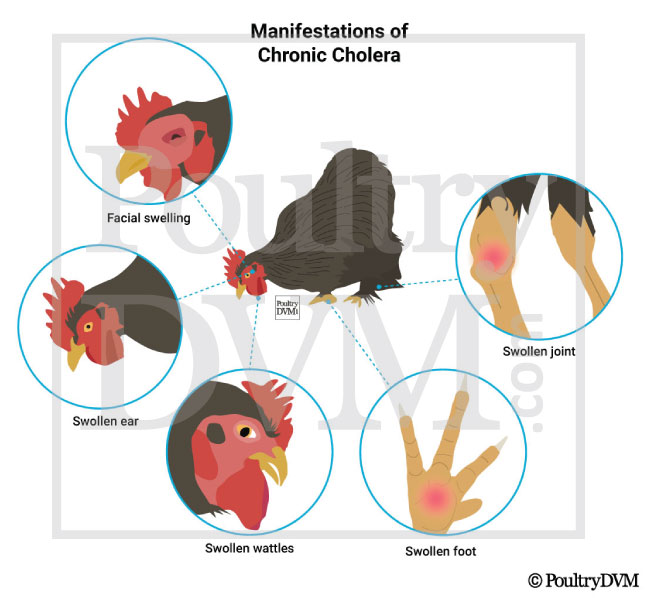Veterinary advice should be sought from your local veterinarian before applying any treatment or vaccine. Not sure who to use? Look up veterinarians who specialize in poultry using our directory listing. Find me a Vet
Other Names: Pasteurellosis

| Name | Summary | |
|---|---|---|
| Supportive care | Isolate the bird from the flock and place in a safe, comfortable, warm location (your own chicken "intensive care unit") with easy access to water and food. Limit stress. Call your veterinarian. | |
| Probiotics | Providing chickens multi-strain probiotics may help improve intestinal health while attenuating inflammatory reaction, clinical signs and mortality. | R Reuben et al., 2021 |
| Oxytetracycline | 5 mg/kg SC, IM q12-24h or 2500 mg/L drinking water and 2500 mg/kg feed. Must be given simultaneously in both feed and water to be effective. Do not use outdated medication, because it becomes nephrotoxic. Do not give at the same time as giving products or food containing Al, Ca, Mg, or Fe as it will reduce or alter absorption of the drug. | B Speers |
| Norfloxacin | 8-10 mg/kg PO q24h or 100 mg/L drinking water for 5 days. Not approved by the FDA for use in food-producing birds. | B Speers |
| Tylosin | 15-30 mg/kg IM q6-12h | B Speers |
| Sulfamethazine | 0.5 to 1% in food or 0.1% in water for at least 5 days. Infection may recur. | B Speers |
| Streptomycin | 20-50 mg/kg IM q12-24h. May be nephrotoxic or neurotoxic. | B Speers |
| Penicillin | 50,000 IU/kg IM | B Speers |

| Winter | Spring | Summer | Autumn |
© 2026 PoultryDVM All Rights Reserved.